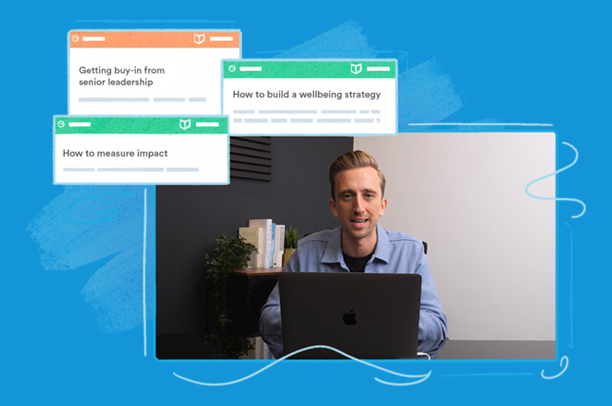Empathy – defined as the ability to perceive and relate to the thoughts, emotions, or experiences of others – is a single skill that has the power to transform your workplace.
Studies have found a direct link between empathy and commercial success. This is likely due to the fact that research suggests empathy can boost workplace engagement, productivity, collaboration, inclusion, teamwork, retention, motivation, wellbeing and more.
Let’s take a closer look at the power of cultivating an empathetic workforce.
What is empathy?
Empathy is about stepping into someone else’s shoes, being aware of their feelings, understanding their needs and actively trying to support them. According to psychologists, empathy is one of five key components of emotional intelligence and develops through three stages:
- Cognitive empathy: being aware of the emotional state of another person; a desire to understand.
- Emotional empathy: engaging with and sharing those emotions; a desire to feel.
- Compassionate empathy: taking action to support that person; a desire to help.
What does empathy look like in the workplace?
In the workplace, an empathetic employee might be someone who:
- Actively listens to what others have to say, paying full attention to the present situation
- Easily picks up on how others are feeling and spots signs of struggle
- Is curious and interested in the needs, development and aspirations of colleagues
- Helps colleagues with both personal and work-related issues
- Is the go-to person for advice
- Offers constructive feedback
- Creates genuine rapport with colleagues and clients
- Recognises that everyone is human
The power of empathetic leadership
The signs of empathy listed above are applicable to all employees, not just leaders. However, there is a wide body of research that shows the impact that empathetic leadership has on organisations.
For example, research by Van Brommel in 2021 found that empathetic leadership promotes inclusion, innovation and engagement. Specifically:
- 50% of people with highly empathic senior leaders report often or always experiencing inclusion at work, compared to only 17% of people with less empathic senior leadership.
- 61% of people with highly empathic senior leaders report often or always being innovative at work compared to only 13% of people with less empathic senior leaders.
- 76% of people with highly empathic senior leaders report often or always being engaged, compared to only 32% of people with less empathic senior leaders.
Moreover, empathy is key to establishing trusting relationships and according to an article from HBR, organisations where employees trust their management have 74% less stress, 106% more energy at work, 50% higher productivity, 13% fewer sick days, 76% more engagement, 29% more life satisfaction and 40% less burnout.
The power of an empathetic culture
Whilst empathetic leadership is clearly beneficial, cultivating empathy across the whole organisation is where the power to transform a workplace really takes place.
For example, the 2020 State of Workplace Empathy Report highlights how key empathy is for employee job satisfaction and loyalty:
- 75% of employees would choose an employer with a strong culture of empathy over an employer offering a slightly higher salary.
- 73% of employees would choose an empathetic employer even if it meant changing their role, industry or career path.
- 83% of employees would consider leaving their current organisation for a similar role at a more empathetic organisation.
Additionally, the research by Van Brommel in 2021 also found that 76% of employees believe an empathetic organisation inspires more motivated employees.
Interestingly, a recent study found that 90% of employees reported that investing in employee mental health is one of the biggest demonstrations of empathy from an employer. Employees believed when organisations provide mental health support/initiatives it can increase productivity (48%) and motivation (42%), reduce turnover (39%) and create a sense of belonging in the organisation (36%).
These statistics highlight a small amount of the research that proves the power of empathy. However, cultivating empathy is more than doing what is ‘good’ for business, it is doing what is ‘right’ for employees.
How can you cultivate an empathetic workforce?
Now that you know the power of empathy in the workplace, you might be wondering what you can do to cultivate it within your organisation. Fortunately, empathy is not a fixed trait and it can be learned.
We looked at how you can teach empathy in our webinar titled ‘How HR Can Cultivate Empathy In The Workplace’. To access the replay of this webinar, hosted by Paul McGregor (Founder of Everymind at Work) and Carl Garner (Educational Psychologist & Speaker), and download all the resources we provided, please click here.








